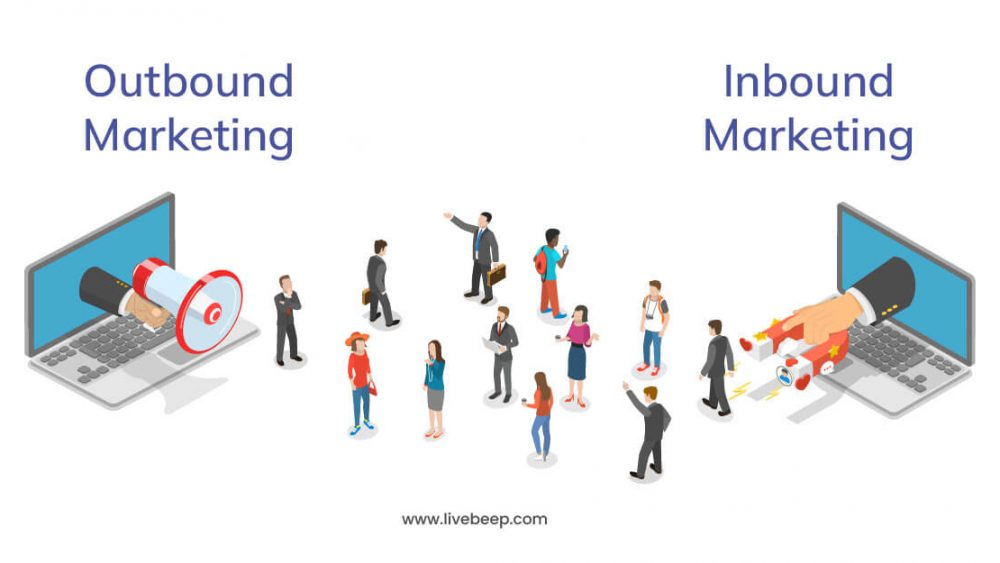Inbound Marketing strategies are designed to reach a company’s sales goals by focussing on the needs of the user. Technology evolves and changes; together with it strategies are refined and optimised to reach, involve and deal with potential customers.
The strategy that was getting implemented at the beginning of the “Digital Era” is known by the name of Outbound Marketing, which specialised in engaging customers through direct, one-way strategies. After this strategy, Inbound Marketing emerged, having as its objective attracting a potential customer as a result of being offered relevant, worthwhile information.
The characteristics that govern Inbound and Outbound Marketing
Outbound Marketing
|
Inbound Marketing
|
| Lacks added value | Shows the customer extra information relevant to what they are looking for. |
| Customers are engaged by traditional media (television, press, radio, banners, hoardings, etc.) | The user is the one who finds the content. |
| It focusses on producing a sale. | It does not directly seek a sale; it focusses on informing or entertaining the user. |
| Customers are engaged as if being hunted. | Customers have knowledge and models of what they are looking for. |
| Unidirectional communications; there is no possibility of direct interactions. | There is interactive communication making the user feel considered. |
| It is oriented toward offering a product based on its features and advantages so the customer buys it. | It is oriented toward the interests and tastes of the individual. |
| There is no audience segmentation; it reaches everyone. | The audience is segmented because it has already been interested in some information about the product before. |
| It is distinguished by interrupting what the customer is doing, something that can be annoying. | It does not interrupt the customer to attract them. |
| The user cannot research the product they are being offered. | The user researches and enquires about the product to decide if they are going to buy or not. |
| The product or service is described in the third person, failing to engage the user. | It focusses on the audience browsing the web (social networks, blogs, etc.) |
| It can be understood with the metaphor of an arrow hunting for customers. | It has been given a boomerang mode (return) in order to improve the strategies implemented. |
| It has a high budget because it requires hiring advertising space. | It has a low budget, but that does not mean it is of lower quality because it takes advantage of creativity for any strategy that is implemented. |
| Variations are not easily measured. | The audience is segmented because it has already been interested in some information about the product before. |
Comparing the characteristics, it can be said that the most important difference between Inbound Marketing and Outbound Marketing is that while one is devoted to and focussed on attracting potential customers, the other is focussed in looking for and pursuing them.
Is it possible to combine Inbound and Outbound Marketing?
Ever since marketing was created it has changed and improved based on the customer to make their way of buying easier and, with it, improving their way of living. Although in principle it was created to work for the benefit of the company, it was realised that customers are the priority and consequently strategies must be tailored based on them.
In this way, we can say: Of course they can be combined! There’s no problem with that. What’s more, promoting a company by means of these two kinds of strategies, Inbound Marketing combined with Outbound Marketing, can contribute and produce greater effectiveness in advertising campaigns because they will create an overall mega strategy and give them greater reach.
As a result of that, all the variations and possible response scenarios must be kept in mind in designing marketing strategies. It is advisable to involve Inbound and Outbound strategies. Because factors such as geographic location, the budget that is available, the goals that are to be reached and the product or service that is being promoted must be addressed by a marketing strategy that fits with what is needed.
In combining Inbound with Outbound Marketing you are extending the reach when dealing with potential customers because that allows you to take into account any kind of audience and in larger numbers. All this benefits both the company and the end consumer because it will cause one to gain a new customer and the other to get a new product or service.
It is important to highlight that Inbound Marketing for SMEs (small and mid-size enterprises), when combined with Outbound Marketing, will give recognition and positioning on both the web and other audiovisual media making it grow – and can even make it known as a truly important company.
So why don’t you try it?



 Español
Español
